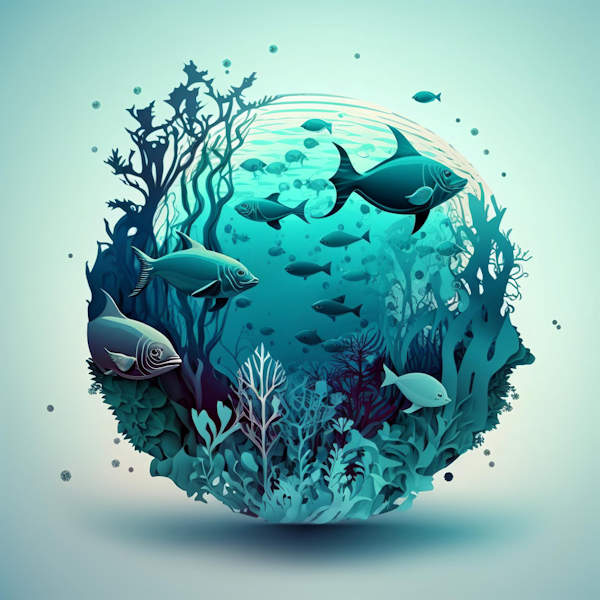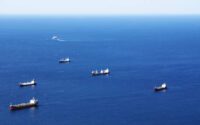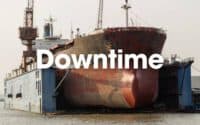Top 20 Eco-friendly Innovations for Commercial Ships

As environmental concerns become paramount, the maritime industry continues to innovate, seeking sustainable solutions for commercial operations. From optimizing hull designs to utilizing cleaner fuels, these eco-friendly innovations not only protect our planet but also offer economic advantages by improving fuel efficiency and reducing operational costs. The future of shipping is undoubtedly green.
* Please send feedback/suggestions to editor @ shipuniverse.com
1. Air Lubrication Systems
Description: This technology introduces tiny bubbles along the hull’s bottom. The bubbles reduce the friction between the hull and seawater, leading to enhanced fuel efficiency.
Benefits: Reduced fuel consumption means fewer greenhouse gas emissions. It can lead to fuel savings of up to 10% depending on the vessel type.
2. Rotor Sails
Description: Rotor sails are tall, spinning cylinders that use the Magnus effect to provide additional propulsion, helping to reduce reliance on fossil fuels.
Benefits: When wind conditions are favorable, rotor sails can significantly reduce fuel consumption. Tests have shown savings of up to 20% on specific routes.
3. Hybrid Propulsion Systems
Description: These systems combine traditional internal combustion engines with electric drive systems. The electric systems can be powered by batteries or alternative fuels.
Benefits: Reduced emissions, decreased fuel consumption, and flexibility in using the most efficient power source as per requirements.
4. LNG-Powered Engines
Description: Liquid Natural Gas (LNG) engines utilize LNG, a cleaner fuel alternative to diesel or heavy fuel oil.
Benefits: LNG emits up to 25% less carbon dioxide compared to traditional fuels. Moreover, it significantly reduces sulfur oxide and particulate matter emissions.
5. Waste Heat Recovery
Description: Systems that capture and utilize the waste heat from engines to produce additional energy, often in the form of electricity.
Benefits: Better fuel efficiency, reduced emissions, and decreased operational costs.
6. Ballast Water Treatment Systems
Description: These systems treat ballast water, which ships take on for balance, to eliminate invasive species before discharging it.
Benefits: Helps protect marine biodiversity and ecosystems from invasive species.
7. Solar Panels and Wind Turbines
Description: Installing solar panels and small wind turbines onboard to generate supplementary electricity.
Benefits: Reduces the reliance on the ship’s main engines or generators for power, leading to fuel savings and emission reductions.
8. Anti-Fouling Paints
Description: Specialized coatings for ship hulls that prevent marine organisms like algae and barnacles from attaching to the hull.
Benefits: By reducing hull fouling, ships can maintain optimal hydrodynamics, leading to less fuel consumption and fewer emissions.
9. Optimized Hull Designs
Description: Innovative hull designs that minimize resistance in the water, improving hydrodynamics.
Benefits: Enhanced fuel efficiency and reduced emissions.
10. Battery-Electric Ships
Description: Vessels powered entirely by batteries, with zero emissions at the point of use.
Benefits: Elimination of greenhouse gas emissions during operation. Ideal for short routes like ferries or small passenger ships.
11. Modern Wind-Powered Sails
Description: A renewed interest in traditional sailing methods has spurred the development of advanced sails, including soft sails, wing sails, and kite sails that harness wind to provide propulsion.
Benefits: Significant reduction in fuel consumption and emissions when wind conditions are favorable. It can be retrofitted on existing ships or incorporated into new designs.
12. Energy-Efficient Ship Lighting
Description: The adoption of LED lighting and automated lighting systems to reduce energy consumption on board.
Benefits: LEDs consume up to 80% less energy than traditional bulbs. Automated systems ensure lights are only in use when necessary, further saving energy.
13. Shore Power Systems
Description: Infrastructure that allows ships to plug into the local electric grid while docked, reducing the need for ships to run their engines while in port.
Benefits: Elimination of emissions from ships while they’re in port, benefiting both the environment and improving air quality in port cities.
14. Fuel Cells
Description: Devices that convert the chemical energy from a fuel, such as hydrogen, into electricity through a chemical reaction.
Benefits: When using hydrogen, the only byproduct is water, making it a zero-emission power source. They also have a higher efficiency compared to internal combustion engines.
15. Biofuels for Marine Engines
Description: Derived from renewable sources like plant oils or algae, biofuels can replace or be mixed with traditional marine fuels.
Benefits: Reduced greenhouse gas emissions, decreased reliance on fossil fuels, and potential for carbon-neutral operations if sustainable sources are used.
16. Digital Twin Technology
Description: This involves creating a digital replica of a physical ship, allowing shipowners and operators to simulate various conditions and optimize operations for efficiency.
Benefits: Enables more efficient route planning and maintenance scheduling, leading to fuel savings and reduced emissions.
17. Dynamic Weather Routing
Description: Advanced software systems that analyze real-time weather data to recommend the most efficient routes, optimizing for speed and fuel consumption.
Benefits: Reduced fuel use, decreased voyage times, and enhanced safety by avoiding adverse weather conditions.
18. Cold Ironing
Description: Similar to shore power systems but specifically refers to the process where the ship’s main and auxiliary engines are shut down and the vessel is powered from a landside source while at berth.
Benefits: Reduces emissions in ports and harbors, leading to cleaner air in port cities and reduced fuel costs for operators.
19. Desalination Systems
Description: Systems onboard that convert seawater into fresh water for daily operations, reducing the need to carry or source fresh water from ports.
Benefits: Reduces weight on ships (when they don’t have to carry large amounts of freshwater), leading to fuel savings. Also promotes water conservation.
20. Efficient Propeller Designs and Propeller Boss Cap Fins (PBCF)
Description: New propeller designs and additions like PBCF can recover lost energy and reduce the vortices at the propeller hub, improving hydrodynamic efficiency.
Benefits: Enhanced propulsion efficiency, leading to significant fuel savings and reduced emissions.

Do you have a Maritime Product or Service that may be of interest to Shipowners? Tell us about it here!
Do you have feedback or insights? Please reach out to editor @ shipuniverse.com



